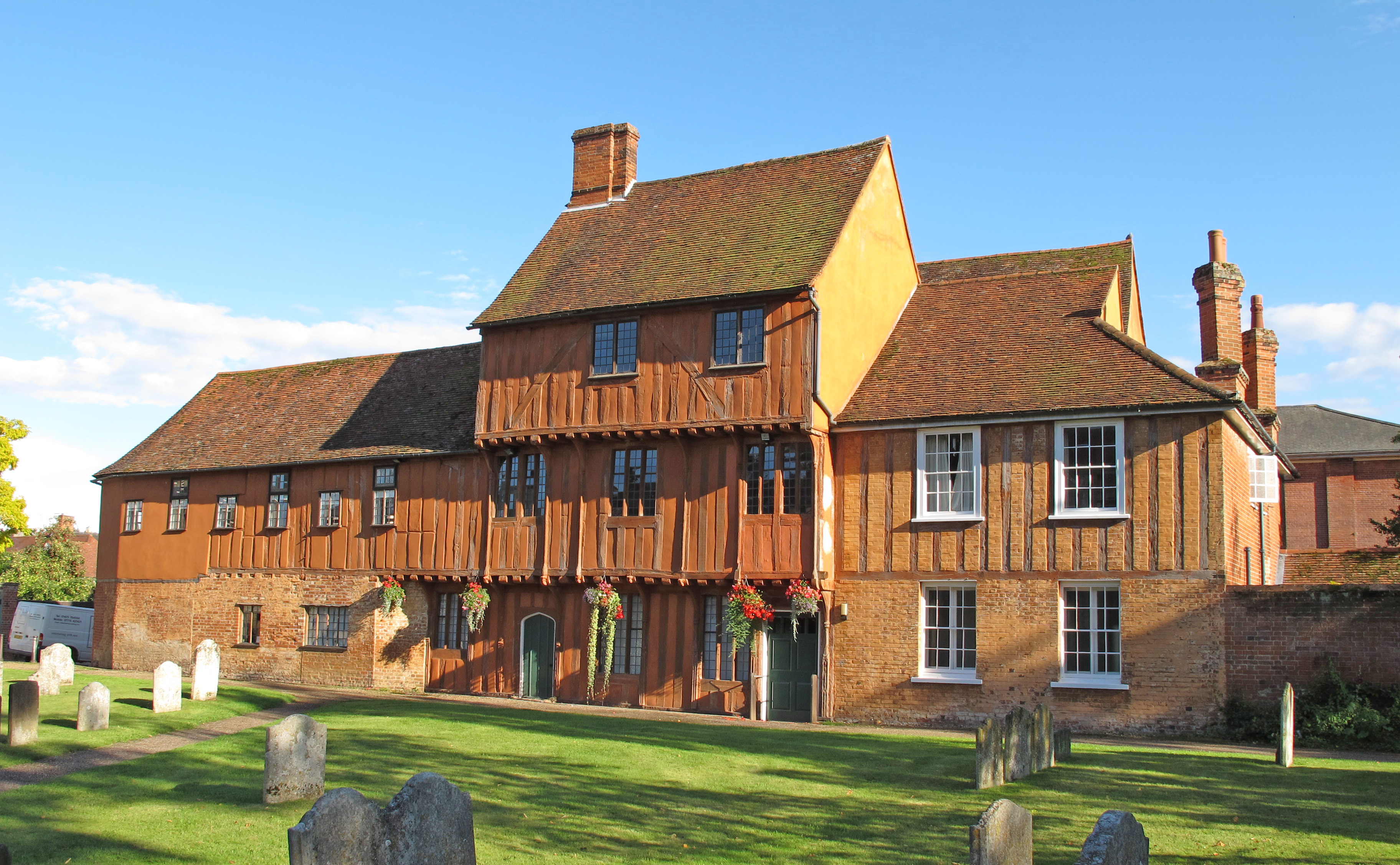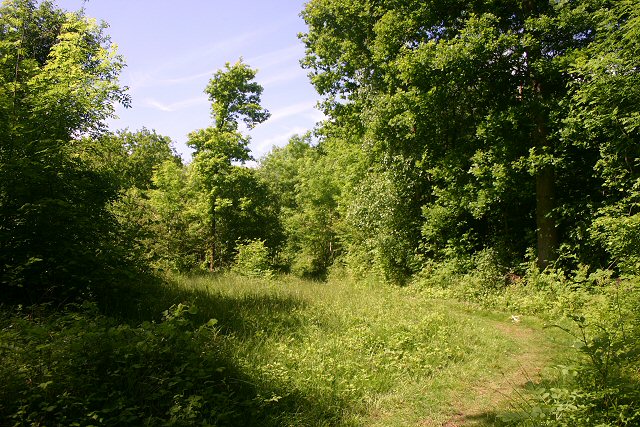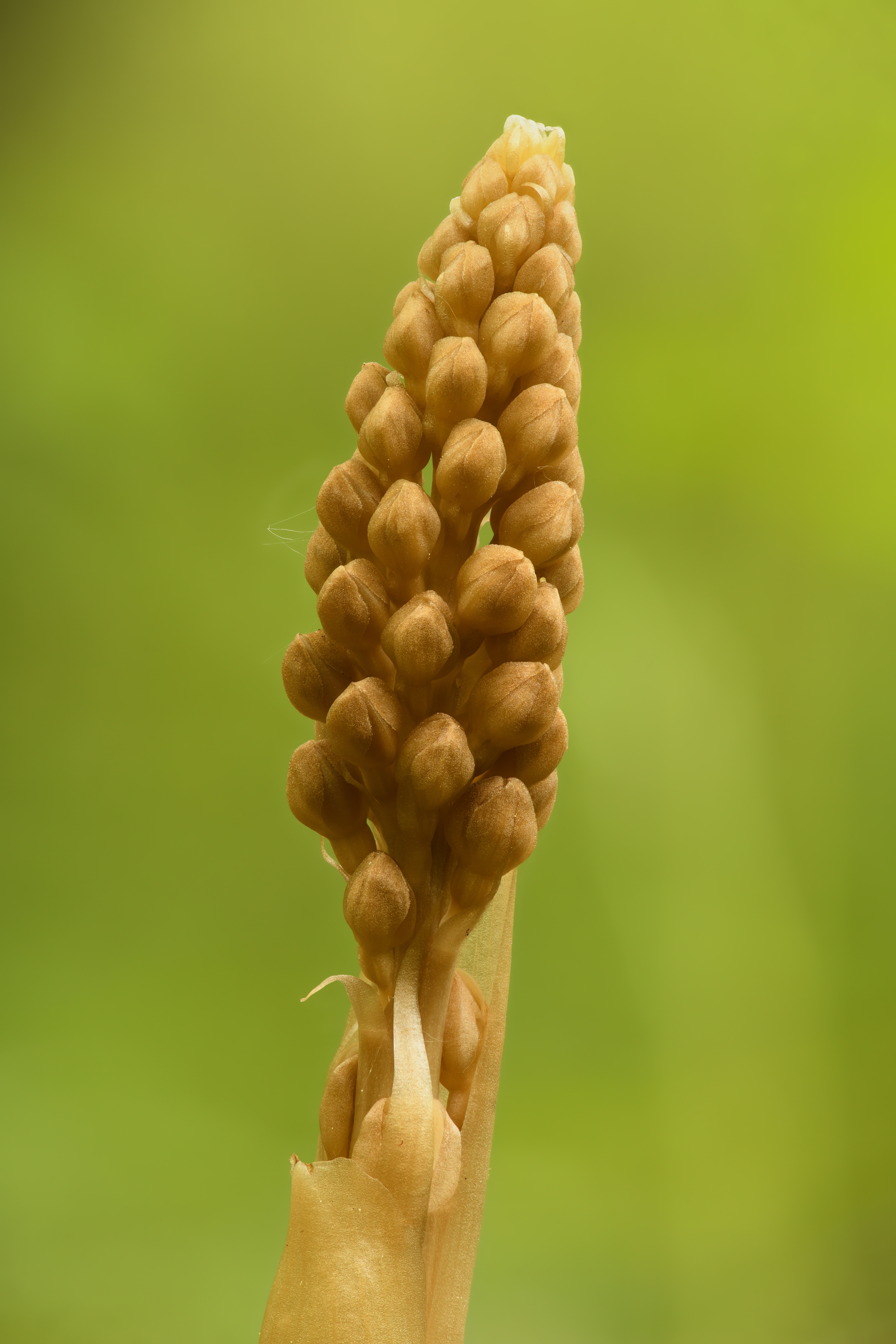|
Hintlesham Woods
Hintlesham Woods is a biological Site of Special Scientific Interest east of Hadleigh in Suffolk. Part of it is Wolves Wood, which is managed by the Royal Society for the Protection of Birds. These ancient coppice with standards woods are mainly oak with some ash and birch. The soils are boulder clay, which is covered in some areas with glacial sands. Ground flora includes green hellebore, birds-nest orchid and wood spurge ''Euphorbia amygdaloides'', the wood spurge, is a species of flowering plant in the family Euphorbiaceae, native to woodland locations in Europe, Turkey and the Caucasus. It is a bushy evergreen perennial, growing to a height of , with dark green .... There are several kinds of woods in two blocks. There is access to footpaths in Wolves Wood and Ramsey Wood, but other areas are private property with no public access. References {{SSSIs Suffolk Sites of Special Scientific Interest in Suffolk Nature Conservation Review sites Babergh District ... [...More Info...] [...Related Items...] OR: [Wikipedia] [Google] [Baidu] |
Site Of Special Scientific Interest
A Site of Special Scientific Interest (SSSI) in Great Britain or an Area of Special Scientific Interest (ASSI) in the Isle of Man and Northern Ireland is a conservation designation denoting a protected area in the United Kingdom and Isle of Man. SSSI/ASSIs are the basic building block of site-based nature conservation legislation and most other legal nature/geological conservation designations in the United Kingdom are based upon them, including national nature reserves, Ramsar sites, Special Protection Areas, and Special Areas of Conservation. The acronym "SSSI" is often pronounced "triple-S I". Selection and conservation Sites notified for their biological interest are known as Biological SSSIs (or ASSIs), and those notified for geological or physiographic interest are Geological SSSIs (or ASSIs). Sites may be divided into management units, with some areas including units that are noted for both biological and geological interest. Biological Biological SSSI/ASSIs may ... [...More Info...] [...Related Items...] OR: [Wikipedia] [Google] [Baidu] |
Hadleigh, Suffolk
Hadleigh () is an ancient market town and civil parish in South Suffolk, East Anglia, situated, next to the River Brett, between the larger towns of Sudbury and Ipswich. It had a population of 8,253 at the 2011 census. The headquarters of Babergh District Council were located in the town until 2017. Origin of the name Skeat, in his 1913 ''The Place-Names of Suffolk'', says this: Spelt ''Hadlega'', R.B.; ''Hadleigh'', Ipm.; ''Hædleage'', in a late chapter, Thorpe, Diplomat, 527; ''Headlega'', Annals of St Neot, quoted in Plummer's ed. of the A.S.Chronicle, ii. 102; ''Hetlega'', D.B., p.184. In D.B. the ''t'' stands for ''th''; and the true A.S. form appears in a Worcs. charter, dated 849, as ''hæðleage''(gen.) with reference to Headley Heath (a tautological name) in Birch, C.S. ii. 40; see Duignan, Placenames of Worcs. The sense is 'heath-lea.' In a similar way the A.S. ð has become t in Hatfield (Herts.) which means 'heath-field'. History Guthrum, King of the Dan ... [...More Info...] [...Related Items...] OR: [Wikipedia] [Google] [Baidu] |
Suffolk
Suffolk () is a ceremonial county of England in East Anglia. It borders Norfolk to the north, Cambridgeshire to the west and Essex to the south; the North Sea lies to the east. The county town is Ipswich; other important towns include Lowestoft, Bury St Edmunds, Newmarket, and Felixstowe which has one of the largest container ports in Europe. The county is low-lying but can be quite hilly, especially towards the west. It is also known for its extensive farming and has largely arable land with the wetlands of the Broads in the north. The Suffolk Coast & Heaths and Dedham Vale are both nationally designated Areas of Outstanding Natural Beauty. History Administration The Anglo-Saxon settlement of Suffolk, and East Anglia generally, occurred on a large scale, possibly following a period of depopulation by the previous inhabitants, the Romanised descendants of the Iceni. By the fifth century, they had established control of the region. The Anglo-Saxon inhabitants later b ... [...More Info...] [...Related Items...] OR: [Wikipedia] [Google] [Baidu] |
Wolves Wood
Wolves Wood is a woodland near Hadleigh, Suffolk. It is one of 7 ancient woodland areas within Suffolk. An ancient woodland is defined as a site that has been continuously occupied by woodland from the year 1600 or before. Overview Wolves Wood is managed by the Royal Society for the Protection of Birds using coppicing and is located six miles from Ipswich railway station, north east of Hadleigh. It is on the A1071, Ipswich Road. The wood has an area of 38.4 hectares and it is part of the Hintlesham Woods biological Site of Special Scientific Interest, and Nature Conservation Review ''A Nature Conservation Review'' is a two-volume work by Derek Ratcliffe, published by Cambridge University Press in 1977. It set out to identify the most important places for nature conservation in Great Britain. It is often known by the initial ... site, Grade I. Flora and fauna Plant species include oak. It is home to roe deer, twelve species of dragonfly and damselfly while bird species found ... [...More Info...] [...Related Items...] OR: [Wikipedia] [Google] [Baidu] |
Royal Society For The Protection Of Birds
The Royal Society for the Protection of Birds (RSPB) is a charitable organisation registered in England and Wales and in Scotland. It was founded in 1889. It works to promote conservation and protection of birds and the wider environment through public awareness campaigns, petitions and through the operation of nature reserves throughout the United Kingdom. In 2020/21 the RSPB had an income of £117 million, 2,000 employees, 12,000 volunteers and 1.1 million members (including 195,000 youth members), making it one of the world's largest wildlife conservation organisations. The RSPB has many local groups and maintains 222 nature reserves. As founders, chief officers and presidents, women have been at the helm of the RSPB for over 85 years. History The origins of the RSPB lie with two groups of women, both formed in 1889: * The Plumage League was founded by Emily Williamson at her house in Didsbury, Manchester, as a protest group campaigning against the use of great crested ... [...More Info...] [...Related Items...] OR: [Wikipedia] [Google] [Baidu] |
Coppice With Standards
Coppicing is a traditional method of woodland management which exploits the capacity of many species of trees to put out new shoots from their stump or roots if cut down. In a coppiced wood, which is called a copse, young tree stems are repeatedly cut down to near ground level, resulting in a stool. New growth emerges, and after a number of years, the coppiced tree is harvested, and the cycle begins anew. Pollarding is a similar process carried out at a higher level on the tree in order to prevent grazing animals from eating new shoots. ''Daisugi'' (台杉, where ''sugi'' refers to Japanese cedar), is a similar Japanese technique. Many silviculture practices involve cutting and regrowth; coppicing has been of significance in many parts of lowland temperate Europe. The widespread and long-term practice of coppicing as a landscape-scale industry is something that remains of special importance in southern England. Many of the English language terms referenced in this article are ... [...More Info...] [...Related Items...] OR: [Wikipedia] [Google] [Baidu] |
Fraxinus
''Fraxinus'' (), common name, commonly called ash, is a genus of flowering plants in the olive and lilac family, Oleaceae. It contains 45–65 species of usually medium to large trees, mostly deciduous, though a number of Subtropics, subtropical species are evergreen. The genus is widespread across much of Europe, Asia, and North America. The leaf, leaves are opposite leaves, opposite (rarely in Whorl (botany), whorls of three), and mostly pinnate, pinnately compound, though simple in a few species. The seeds, popularly known as "keys" or "helicopter seeds", are a type of fruit known as a samara (fruit), samara. Some ''Fraxinus'' species are Dioecy, dioecious, having male and female flowers on separate plants but sex in ash is expressed as a continuum between male and female individuals, dominated by unisexual trees. With age, ash may change their sexual function from predominantly male and hermaphrodite towards femaleness ; if grown as an ornamental and both sexes are present, ... [...More Info...] [...Related Items...] OR: [Wikipedia] [Google] [Baidu] |
Birch
A birch is a thin-leaved deciduous hardwood tree of the genus ''Betula'' (), in the family Betulaceae, which also includes alders, hazels, and hornbeams. It is closely related to the beech-oak family Fagaceae. The genus ''Betula'' contains 30 to 60 known taxa of which 11 are on the IUCN 2011 Red List of Threatened Species. They are a typically rather short-lived pioneer species widespread in the Northern Hemisphere, particularly in northern areas of temperate climates and in boreal climates. Description Birch species are generally small to medium-sized trees or shrubs, mostly of northern temperate and boreal climates. The simple leaves are alternate, singly or doubly serrate, feather-veined, petiolate and stipulate. They often appear in pairs, but these pairs are really borne on spur-like, two-leaved, lateral branchlets. The fruit is a small samara, although the wings may be obscure in some species. They differ from the alders (''Alnus'', another genus in the family) in th ... [...More Info...] [...Related Items...] OR: [Wikipedia] [Google] [Baidu] |
Boulder Clay
Boulder clay is an unsorted agglomeration of clastic sediment that is unstratified and structureless and contains gravel of various sizes, shapes, and compositions distributed at random in a fine-grained matrix. The fine-grained matrix consists of stiff, hard, pulverized clay or rock flour. Boulder clay is also know as either known as drift clay; till; unstratified drift, geschiebelehm (German); argile á blocaux (French); and keileem (Dutch).Charlesworth, J. K., 1957. ''Chap 18, Boulder Clay''. In ''The Quaternary Era, with Special Reference to its Glaciation''. v. 1, London, United Kingdom, Edward Arnold, p. 376-388.Neuendorf, K.K.E., J.P. Mehl, Jr., and J.A. Jackson, eds. (2005) ''Glossary of Geology'' (5th ed.). Alexandria, Virginia, American Geological Institute. 779 pp. The term ''boulder clay'' is infreqently used for gravelly sedimentary deposits of nonglacial origin. These deposits include submarine slump and slide deposits along continental margins,Reineck, H.E. and Si ... [...More Info...] [...Related Items...] OR: [Wikipedia] [Google] [Baidu] |
Green Hellebore
''Helleborus viridis'', commonly called green hellebore, is a species of flowering plant in the buttercup family Ranunculaceae, native to Central and Western Europe, including southern England. All parts of the plant are poisonous. It was one of many plants first described by Linnaeus in volume one of the 1753 (tenth) edition of his '' Species Plantarum''. The Latin species epithet ''viridis'' means "green". Two subspecies are recognised: *''Helleborus viridis'' subsp. ''viridis'' from Central Europe and the maritime Alps *''Helleborus viridis'' subsp. ''occidentalis'' from western Europe including the British Isles. Other common names recorded include bastard hellebore, bear's foot and boar's foot. Growing to around tall, the green hellebore is a semi-evergreen perennial plant. The flowers appear in spring (February to April). They have five large green oval sepals with pointed tips, and seven to twelve much smaller petals. The roots are rhizomatous. Subspecies ''viridis'' h ... [...More Info...] [...Related Items...] OR: [Wikipedia] [Google] [Baidu] |
Bird's-nest Orchid
''Neottia nidus-avis'', the bird's-nest orchid, is a non-photosynthetic orchid, native to Europe, Russia and some parts of the Middle East. Description ''Neottia nidus-avis'' grows to tall and each shoot can carry up to 60 flowers. Plants are not in any part green, deriving all their nutrition from a mycorrhizal fungus in the soil/litter, which in turn derives nutrition from the roots of trees. Plants are generally beige-brown, though sometimes yellowish or white forms are discovered. The flower labellum splits and strongly diverges at its lower end. This species of orchid can be hard to spot, being camouflaged against the leaf litter. Across Europe, this species flowers May-June. Distribution and habitat It is widespread across most of Europe, occurring also in Algeria, Tunisia, western Siberia, the Caucasus, Iran and Turkey. In the British Isles, ''Neottia nidus-avis'' is found in shady woodland, especially beech, on basic soils. Its conservation status in the UK is near- ... [...More Info...] [...Related Items...] OR: [Wikipedia] [Google] [Baidu] |
Wood Spurge
''Euphorbia amygdaloides'', the wood spurge, is a species of flowering plant in the family Euphorbiaceae, native to woodland locations in Europe, Turkey and the Caucasus. It is a bushy evergreen perennial, growing to a height of , with dark green slightly hairy leaves about long. The complex green-yellow inflorescence (cyathium), typical of ''Euphorbia'', appears in late spring and early summer. It is among the few plants that thrive in the dry shade of trees, where it is used as groundcover. It spreads rapidly by underground rhizomes and can become invasive, though relatively easy to remove. One form known is ''Euphorbia'' ‘Efanthia’. The subspecies ''E. amygdaloides'' subsp. ''robbiae'' (Turrill) Stace, known as Mrs Robb's bonnet, is grown as a garden plant, and has gained the Royal Horticultural Society’s Award of Garden Merit. The milky latex Latex is an emulsion (stable dispersion) of polymer microparticles in water. Latexes are found in nature, but synthetic ... [...More Info...] [...Related Items...] OR: [Wikipedia] [Google] [Baidu] |







